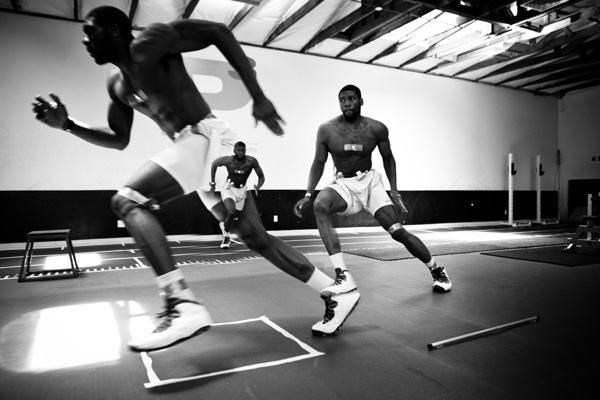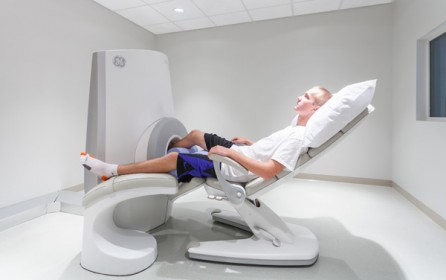EDITOR’S NOTE: This article is part of a new series from Presidio Sports delving into technology in the world of sports. This “Technology in Sports” series will introduce athletes, coaches and sports fans to the important, relevant, or just plain amazing new advances in technologies related to sports.

Professional basketball player Festus Ezeli, who played at Vanderbilt last season before being selected by the Golden State Warriors, participated in P3’s pre-NBA Draft camp in Santa Barbara.
No matter how hard you train or try to stay out of harms way, injuries are an unavoidable component of sports. Whether it?s a professional athlete tearing their ACL or your buddy spraining an ankle in a local pick-up basketball game, we all know of someone that required an MRI to diagnose their injury.
In a lot of cases, this someone might even be you.
That’s the bad news. The good news is that Santa Barbara-based athletes have access to the Central Coast’s only Extremity MRI machine, a technology that is at the forefront of the magnetic resonance imaging industry and has clear benefits for both professional and amateur athletes.

Here’s a look at the machine used at Santa Barbara Extremity MRI that has revolutionized the MRI experience.
In the world of professional sports, MRIs are increasingly used for injury prevention as well as for post-injury care.
Santa Barbara?s Peak Performance Project (P3) uses?Santa Barbara Extremity MRI, located on upper De La Vina Street,?to optimize athletic performance and limit injury risk for their clients.
Professional athletes like Deron Williams from the Brooklyn Nets and Santa Barbara native and MLB player Ryan Spilborghs have trained with P3 in the past.
?We try to keep them healthy and perform at a high level,? said P3?s general manager Adam Hewitt. ?The Extremity MRI machine gives us an opportunity to get the athletes in a comfortable environment and get this precise anatomical data on these important lower extremities.?
Unlike most MRI machines, Extremity MRI?s General Electric 1.5 Tesla MRI System is able to position itself directly around the injured part of the body. The patient can sit or lie down in a reclining, padded chair during the exam in the position that is most comfortable for them.
The aim is to reduce the patient?s feelings of anxiety, discomfort, restlessness and especially claustrophobia.
?The patients can sit however they like,? Extremity MRI technologist Delia White explained. ?We provide them with pillows, foot stools, whatever they need to feel as comfortable as possible.?
But even more important than the relative comfort the MRI machine allows, it provides the staff at P3 with data that analyzes the strengths and weaknesses in an athlete?s body. For example, P3?s staff has been working with the Oklahoma City Thunder?s most recent first round pick in this year?s draft, Perry Jones.
Although most NBA draft experts, like ESPN?s Chad Ford, ranked his talents in the top 5 of all incoming rookies, Jones fell to No. 28 overall because of questions regarding the long-term health of his knees. However, by working and training with Jones during this offseason, P3?s expert staff was not only able to locate the problem, they were able to strengthen and work on the specific areas that caused the stress on his knees.
?He?s extremely powerful and he?s quad dominant so with the way he moves, he uses his knees a lot,? Hewitt said. ?So what we?re trying to do is shift demand from his knees to his hips by changing his movement patterns. That should take the stress off his knees and the knees should stay in the state they?re in now if not get better.?
Moreover, they plan to bring him in during future off-seasons in order to check his progress. Not only is Extremity MRI used to diagnose the problem, it is also used as preventive measure to make sure his knees are healthy while also trying to maximize his force production.
In coordination with Extremity MRI, P3 shows the positive effects that applied sports science can have in preventing injuries as well as increasing performance in athletes. They are even at the forefront of performance brain training by harnessing the breakthroughs in neuro-diagnostic technology, which assist athletes with minute mental details such as improving their ability to mentally recover after an error.
And although it?s still far too early to predict the career Perry Jones might have, most experts now agree that Perry Jones was the steal of the 2012 NBA draft. Hopefully, it won?t be long before we see the work that both Jones and P3 have put in come to fruition in an NBA arena.
